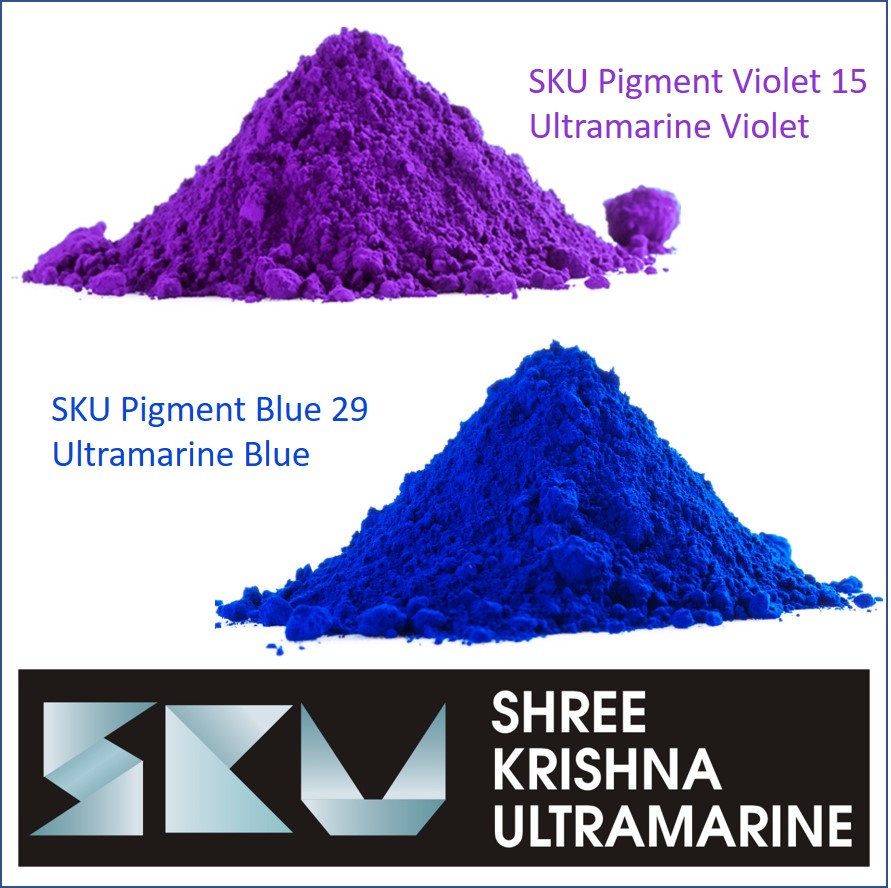An Unbiased View of Pigment Blue 29
Ultramarine Pigments: From Ancient Art to Modern Industry

For generations, color has shaped art, design, and industry. Among the most iconic hues, Ultramarine stands out for its depth and richness. Today, companies like SKU Pigments supply high-quality Ultramarine pigments, including Ultramarine Blue, Ultramarine Violet, Pigment Blue 29, and Pigment Violet. From paints and plastics, Ultramarine has become the standard of modern blue pigments.
The History and Significance of Ultramarine
The name Ultramarine comes from the Latin “ultra mare,” meaning “beyond the sea,” a reference to lapis lazuli originally imported from Afghanistan. For centuries, it was the most expensive pigment, used by Renaissance masters to illuminate manuscripts. It symbolized luxury and spirituality.
Modern chemistry made it possible to synthesize Ultramarine pigments, bringing the once-exclusive shade into everyday use. This breakthrough turned a luxury color into a accessible solution for countless sectors.
The Versatility of Pigment Blue 29
Ultramarine Blue pigments—the synthetic form of Pigment Blue 29—are the most widely used. Known for their lasting vibrancy, they are sustainable and reliable. They are used in:
• Paints and coatings for durability and brilliance.
• Automotive and packaging industries, thanks to chemical safety.
• Inks and printing, where sharpness is vital.
• Cosmetics, given their non-toxic nature.
This balance of durability and eco-friendliness keeps Ultramarine Blue among the top pigments.
The Elegant Appeal of Violet Shades
Ultramarine Violet offers softer tones that appeal in cosmetics. Pigment Violet derived from Ultramarine is eco-safe, making it ideal for eco-friendly materials.
Its sophisticated tone enhances fine art, while ensuring stability without chemical breakdown.
How Pigment Blue 29 Powers Industries
Pigment Blue—particularly Ultramarine Blue pigments—remains a trusted industrial choice. It offers tinting strength for:
• Automotive paints with resistance Ultramarine Blue pigments to fading.
• Branding, ensuring stable shades.
• Tiles, flooring, cement, adding strength and aesthetics.
This multi-industry demand ensures Pigment Blue’s staying power.
The Benefits of Blue and Violet Pigments
• Non-Toxic & Safe: Suitable for sensitive products.
• Heat & Light Resistant: Colors don’t fade under UV.
• Eco-Friendly: Green production methods.
• Cost-Effective: Affordable vs. natural pigments.
• Versatile: Applicable everywhere color matters.
Ultramarine in Modern Industries
1. Paints & Coatings: Decorative finishes.
2. Plastics & Rubber: Stable in polymers.
3. Cosmetics: Eyeshadow and nail polish.
4. Construction: Flooring products.
5. Printing & Inks: Precision printing.
The SKU Pigments Advantage
SKU Pigments is a trusted manufacturer, offering reliability in Ultramarine pigments. Their product portfolio includes:
• Pigment Blue 29 for industrial-scale use.
• Ultramarine Violet and Pigment Violet for luxury tones.
• Custom shades for niche industries.
Their reputation is built on global reach and green practices.
Final Thoughts on Ultramarine Pigments
From a costly luxury to an eco-friendly modern solution, Ultramarine has evolved with industries. Whether it’s the classic brilliance of Ultramarine Blue, the subtle elegance of Ultramarine Violet, or the dependability of Pigment Blue 29, Ultramarine pigments remain indispensable.
With SKU Pigments as a leading manufacturer, industries achieve innovation with color. As demand for non-toxic pigments rises, Ultramarine will remain dominant in global markets.
Frequently Asked Questions
1. What is Ultramarine?
A blue/violet pigment with historic roots and modern industrial use.
2. What is Pigment Blue 29?
A widely used industrial pigment.
3. Where is Ultramarine Violet used?
In fine arts and specialty industries.
4. Are Ultramarine pigments safe?
Yes, non-toxic and eco-friendly.
5. Why choose SKU Pigments?
Leaders in Ultramarine innovation.